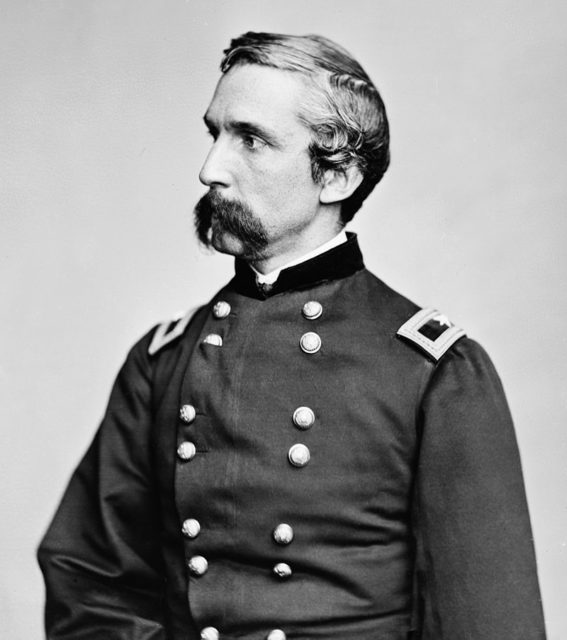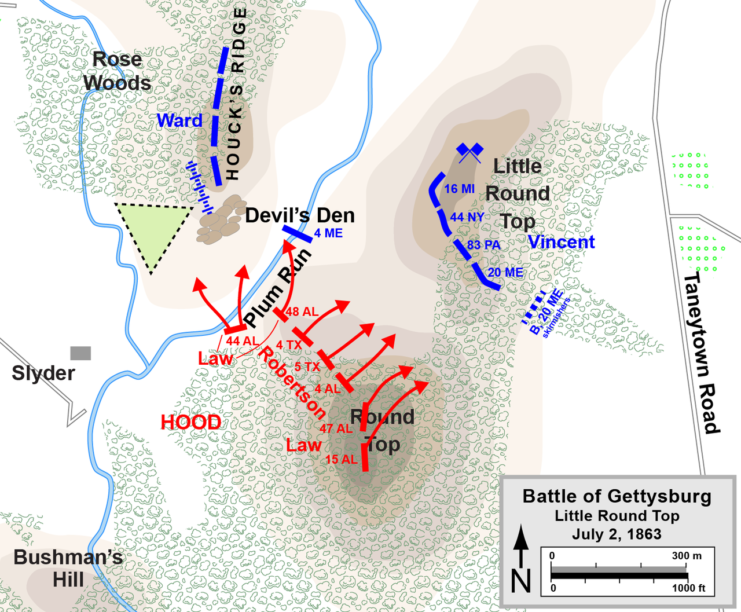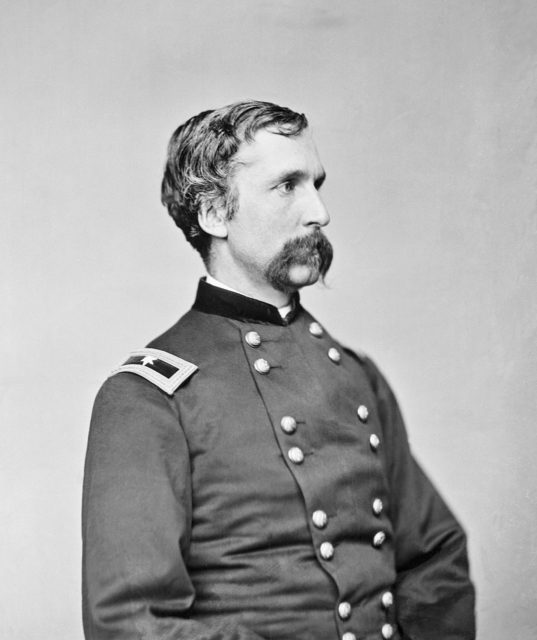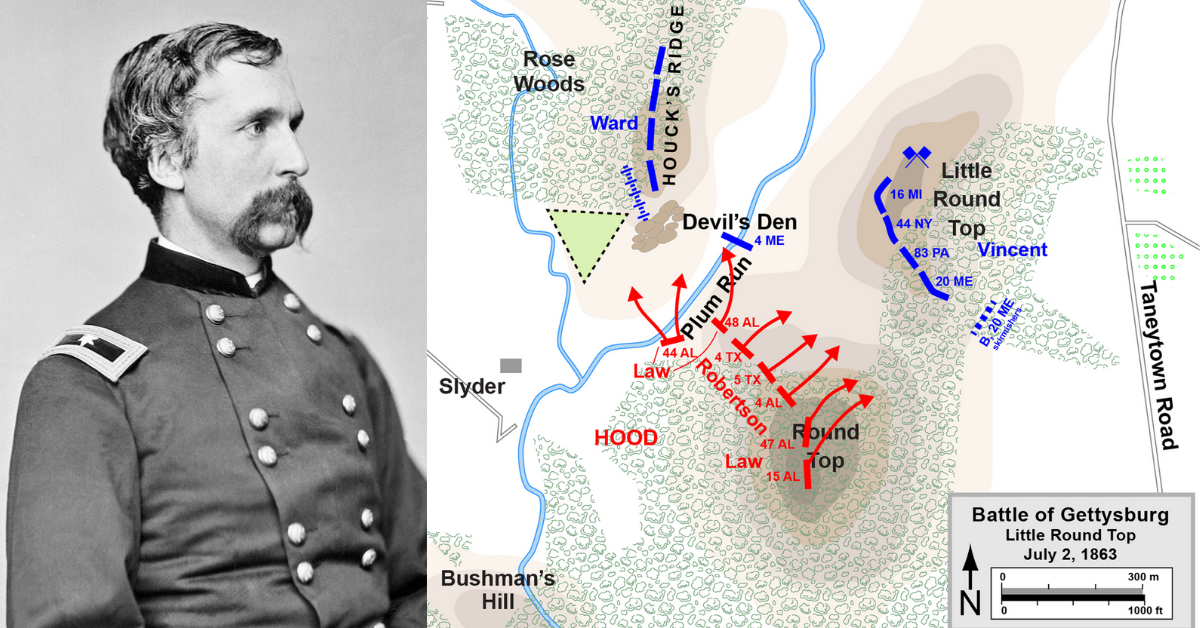Joshua Chamberlain served in the American Civil War, starting out as a lieutenant colonel and eventually rising to the rank of brigadier general in the Union Army. He was severely wounded several times and was later awarded the nation’s highest honor, the Medal of Honor. After the war, he became a state governor and the president of Bowdoin College, all while suffering from the injuries he received during the war.
Chamberlain’s younger years
He was born on September 8 1828 in Brewer, Maine to Sarah Dupee and Joshua Chamberlain. Although he was born in America, Chamberlain’s lineage dated back to twelfth-century England. Military history was ingrained into his family, with his great grandfather serving in both the American Revolutionary War and the French and Indian War. Likewise, his grandfather served in the War of 1812.
Even his father had military experience, serving in the Aroostook War.
Naturally, his father wanted him to continue the tradition and join the military, even naming him after a famous Navy officer, however his mother wanted her son to become a minister.
His father’s wishes would win out in the end though, with Chamberlain joining a military academy in the 1840s. Following this, he learned Greek so he could enter Bowdoin College in the late 1840s, graduating in 1852. Chamberlain would come to fluently speak Arabic, Syriac, Hebrew, and French.
In 1855 Chamberlain returned to Bowdoin College, but this time to educate students, rather than learn. He taught a wide range of subjects.
Also in 1855, he married Fanny Adams and the two had a daughter the following year. Their second child would die young, but their third, a boy, survived. Unfortunately, the pair lost their fourth child.
The Civil War

As soon as the American Civil War began in 1861 Chamberlain was solidly on the side of the Union. He was very vocal about his position, urging others to support the cause and stand up for what they believed in. This spilled over into his work, with Chamberlain actively speaking to his students about his beliefs, resulting in him receiving a leave of absence from the college.
He joined the Union Army almost straight away.
He was first offered the impressive rank of colonel, but Chamberlain refused this as he believed he was not yet experienced enough for such a position. Instead, he became a lieutenant colonel for the 20th Maine Regiment in August of 1862.
His early actions were at the Battle of Fredericksburg in late 1862, where the 20th Maine Regiment faired relatively well against the enemy but lived in terrible conditions surrounded by the corpses and wounded from other units.
Chamberlain served under Colonel Adelbert Ames, but once the latter was promoted, Chamberlain was appointed as a colonel in mid-1863.
The Battle of Gettysburg in July 1863 would cement Chamberlain’s name in the history books.
The early stages of the battle were in the Confederate’s favor, who pushed Union troops back to a defensive line to the south of Gettysburg. With Union forces temporarily in disarray, the Confederates launched a large attack on their left flank, toward Chamberlain’s position.

Chamberlain and the 20th Maine Regiment defended a small hill known as Little Round Top against a full-on assault by Confederate forces, who were slowly draining Chamberlain of men, supplies, and ammunition. Out of options, Chamberlain mounted a daring bayonet charge towards the enemy, starting with his left flank first. He swung his entire line around, attacking and flanking the enemy, capturing a large number of troops and stopping the attack.
During the charge, he was nearly killed on numerous occasions but was seen taking prisoners with his saber. For his brave actions defending the hill Chamberlain was awarded the Medal of Honor in 1893.
The following year Chamberlain was promoted to brigade commander but was severely wounded in the fighting around Petersburg, with the division surgeon declaring that he would not recover. Before his expected death Lieutenant General Ulysses S. Grant promoted him to brigadier general.
However, even death couldn’t stop Chamberlain, who was back in the saddle by the end of the year.
In 1865 he was once again wounded in the fighting on the Quaker Road. He received an injury to his left arm, which nearly needed to be amputated, and was shot in the chest. The bullet traveled through his horse’s neck, punched through a framed photo in his chest pocket, entered his body but traveled around his ribs and exited out his back. To his fellow men, it looked like the general, who remained in the fight, had been shot straight through the chest.
After this, he received the nickname “Bloody Chamberlain” and was promoted to major general by President Abraham Lincoln.
When Confederate forces surrendered in 1865, Chamberlain was tasked with overseeing their surrender parade at Appomattox Court House.
Post-war life

Chamberlain was extremely popular after the war, so he decided to run for the Governor of Maine, which he easily achieved and served for four years.
With his run as governor over, he returned once again to Bowdoin College in 1871, this time as the college’s president. He remained there until 1883.
He then participated in business activities in art, real estate, hotels, and even in public services.
For the rest of his life, he was plagued by the injuries he received during the Civil War but continued to stay active, returning to Gettysburg often and staying involved in military affairs.
Chamberlain died in Portland, Maine in 1914. His death was caused by his wartime injuries, likely the injury he received at Petersburg. At his side when he died was the same doctor that helped him at the time of this injury 50 years earlier.
